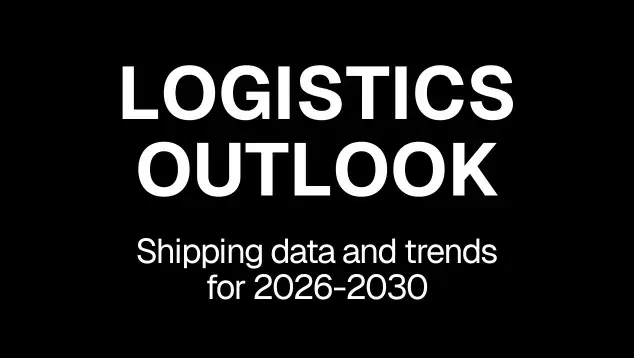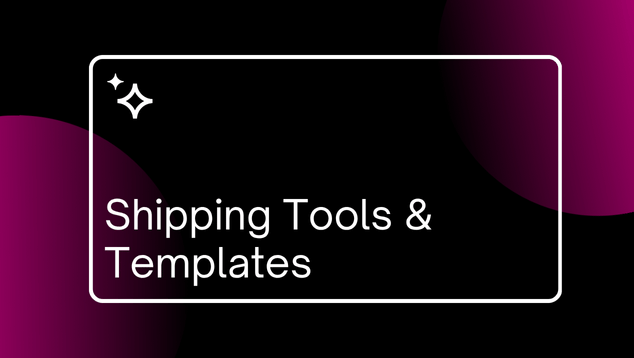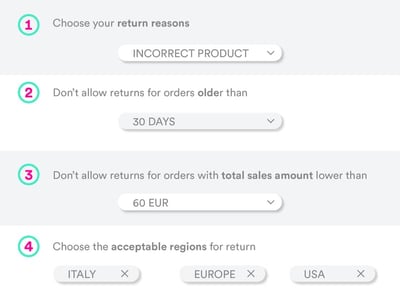Shopify Returns Strategy
If you run an e-commerce business on Shopify, you’ll know that returns, refunds, and exchanges are all part of it.
There are several reasons for customers returning products, whether they’re looking for a refund or an exchange. If they ordered clothes or shoes, perhaps the item doesn’t fit. Or maybe they’ve bought an electrical item that doesn’t work. Or maybe they simply decided that they don’t want or need the product anymore.
Many businesses advertise free returns in the hope of increasing conversions, so customers are in the mindset of ‘buy now, return later’. It’s great for customers to have the flexibility to try their new purchases out at home before making a decision. However, it can be a headache for retailers.
Firstly, there’s the possibility of unsatisfied customers. What are their reasons for returning items they’ve bought? Is it because they don’t like it or it doesn’t meet their expectations? And what is the returns experience like for them? If they find it difficult to send their purchases back, they’re unlikely to order from you again. They may also take to your social media channels to vent their frustrations.
There’s also the issue of the expense of returns to you as a business. Free delivery and, by extension, free returns are never free. Although the customer isn’t paying for them, the cost has to come from somewhere. It can be expensive to absorb cost this if you are getting a high volume of returns.
Finally, there’s the issue of what to do with returned items. They must be sorted into categories, to either be resold, or sold for much less than their original value.
So, you might be asking yourself how to deal with returns on Shopify. Let’s take a look at the things you need to think about when developing a return and exchange policy for your ecommerce business.
Creating a return and exchange policy
Before you create a store return policy, it’s important to understand why customers might choose to return an item over exchanging it, and vice versa.
When a customer wants to exchange an item, it’s usually the case that they were happy with the shopping experience offered by your brand. They just chose the wrong product, whether that’s the wrong size, wrong colour or wrong design.
If a customer wants to return an item, on the other hand, it means that they’re looking for a refund. This could be because they were unhappy with the shopping experience, unhappy with the product received (or both!).
You need to determine how to handle each of these scenarios in order to reduce the amount of admin required by your business. Doing so will also improve the customer experience.
Creating a refund policy
There are several things to consider when writing your refund policy, but whatever you put in it, it’s important to formalise it so your customers are clear on what it does – and does not – include.
- Are you offering full refunds to customers, or partial refunds only? Will they get their money back, or will you offer store credit rather than money back?
- Which items are refundable, which ones can be exchanged, and which are non-refundable and non-exchangeable.
- How long are returns permitted, for example for 30 days after purchase, or longer.
- What condition can items be returned in? Can they be returned lightly used, or must they be unblemished? Should they be in their original packaging? Do the tags need to be on, or can items with tags removed be returned?

Dedicate an area of your site to returns and exchanges
Once you’ve written your policy for returns and refunds, you need to make sure that it’s visible to customers. It’s a good idea to create an area of your website that’s dedicated to returns and exchanges.
You should make it impossible for users to miss your returns policy. Make sure you add it to prominent places across your site, including:
- FAQ page
- Product pages
- Shopping basket
- Checkout page
It’s easy to manage Shopify returns when you use a service like ShippyPro. Our Easy Return service is super intuitive for both you and your customers to use, and helps to expedite the returns process to keep your customers happy.
All you have to do is copy and paste a code to embed a returns portal on your site. It’s designed to be easy to use for customers. They just need to make a request to return an item via the portal, which you can accept or refuse.
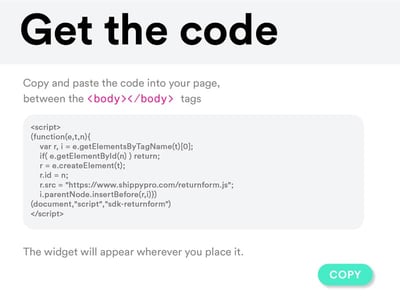
Once the return has been approved, ShippyPro sends the return label with return instructions to the customer, allowing them to print the label with one click and return the item at their leisure. Simple!
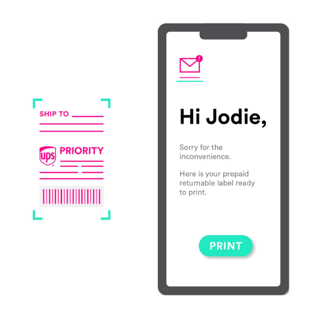
Want to find out for yourself how ShippyPro can reduce your Shopify return rates? Register today and turn your product returns headache to your advantage.
How to minimise loss on returns
It’s no surprise that returns are expensive for ecommerce businesses. By using ShippyPro to deal with returns on Shopify, you’ll cut down on the number of man hours needed to manage returns. There are still other costs associated with product returns that can threaten your margins – but the good news is that there are strategies to minimise these costs.

Turn returns into exchanges
Most companies take a loss on returns, but that’s not necessarily the case with exchanges. If you can get a customer to swap an item for another one rather than getting a refund, you’ll see a difference in your profit margins. A refund means you’ll lose money on the cost of shipping as well as on profits made from the original order, but with an exchange, you’re not losing the value of that original purchase.
How can you incentivise customers to exchange an item instead of returning it? You can cover the cost of the return shipping if the customer chooses to exchange. If customers are presented with the option of an exchange at no additional cost to them, or a refund where they have to pay postage, they may well choose the exchange if they still feel an affinity to your brand.
The benefit of this is that you still have the chance to turn their experience around and create a loyal customer, if you can meet their expectations the second time round.
Selling warranties
If you sell expensive items through your Shopify store, you may also want to sell product warranties. This will protect your business against paying out on damaged products. Sometimes there’s also disputes over who is at fault for the damage (you? Your delivery company? The customer?) and warranties will avoid this as well.
Selling product warranties is also a good way for your business to make extra money. Often the warranty provider will offer commission for warranties sold, so by offering warranties on your product pages, you could create a new revenue stream.
Upselling on exchanges
Another strategy is to upsell more expensive products to customers when they’re exchanging an item. This is a valuable tactic, as although exchanges are generally better for your profit margins than returns, they can still incur costs.
Try to encourage the customer to exchange their product for a more expensive alternative, or a higher quality product. You could also encourage cross sales by showing them items that complement what they’ve bought. If they’re using store credit, then you could encourage them to spend more by offering free shipping on purchases of a certain amount.

More strategies to minimise returns
Are you looking for even more ways to minimise returns and increase customer satisfaction?
Customer reviews
One tactic for doing this is to encourage more customer reviews. This is a great psychological strategy, as if a customer sees positive reviews it affects their perception of the brand. It’s been found that consumers are likely to spend 31% more on products or services from businesses that have excellent reviews.
It’s even better if customers can read good reviews of both the products and the return process. You can encourage reviews by reaching out to customers after they make a purchase, asking them to rate their experience. A survey by BrightLocal found that, of the 74% of customers who were asked to provide feedback, 68% were willing to do it.
That’s compelling evidence. If you’re not already reaching out to customers to ask them to leave feedback, you should make this a key part of your strategy.
Segment customers and products
By taking an analytical approach, you can use segmentation to minimise product returns. Identify which products are getting the highest number of bad reviews, or which customers want to return products.
You’re using customer data to identify trends and common behaviour to inform your strategy moving forward. You might segment data that highlights the reasons for customer returns, if they dislike a particular style or brand, or if they frequently return products.
You can use this data to build tailored profiles for high-risk customers. Providing this data to the marketing team will allow them to tailor marketing messages to these customers, designed to dissuade them from returning items.

How can ShippyPro make Shopify returns easy?
ShippyPro makes returns easy. Our Easy Return feature allows you to customise your Shopify returns policy. We know that returns aren’t one-size-fits all, so you can customise ShippyPro’s flexible rules to adapt to your needs.This allows customers to know what can and can’t be returned, and how long they have to send their items back.
Once you’ve set up the rules for your store return policy, you just need to copy and paste the pre-written code to your website. Whether you’ve built a custom website or use a CMS, just add the simple script and a returns portal will appear on your website.
Shipping Labels
ShippyPro also allows customers to quickly and easily print shipping labels via the returns portal. As soon as a return is approved, ShippyPro will send a packing label and return instructions to the customer.
With just one click, they can print out a shipping label and post their items to you.
Return Analytics
The returns portal includes return analytics, helping you understand the reason for customer returns. If you know why users are returning items, you can create a more customised shopping experience to reduce return rates and offer users a better returns experience.
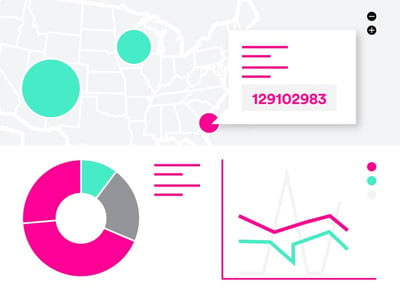
We’ve found that 89% of consumers will make another purchase from an e-commerce store if their return experience was a positive one. Take the chance to turn a negative experience into a positive one and increase customer lifetime value.
Use ShippyPro to manage returns on Shopify today
Want to find out for yourself how ShippyPro can reduce your Shopify return rates? Register today and turn your product returns headache to your advantage.
ShippyPro is the complete shipping software for online and offline retail. With Label Creator, Track & Trace, Easy Return and Analytics features, our software simplifies your shipping operations. ShippyPro integrates with over 180 carriers and 80 sales channels, making it compatible with a wide range of products and use cases.







